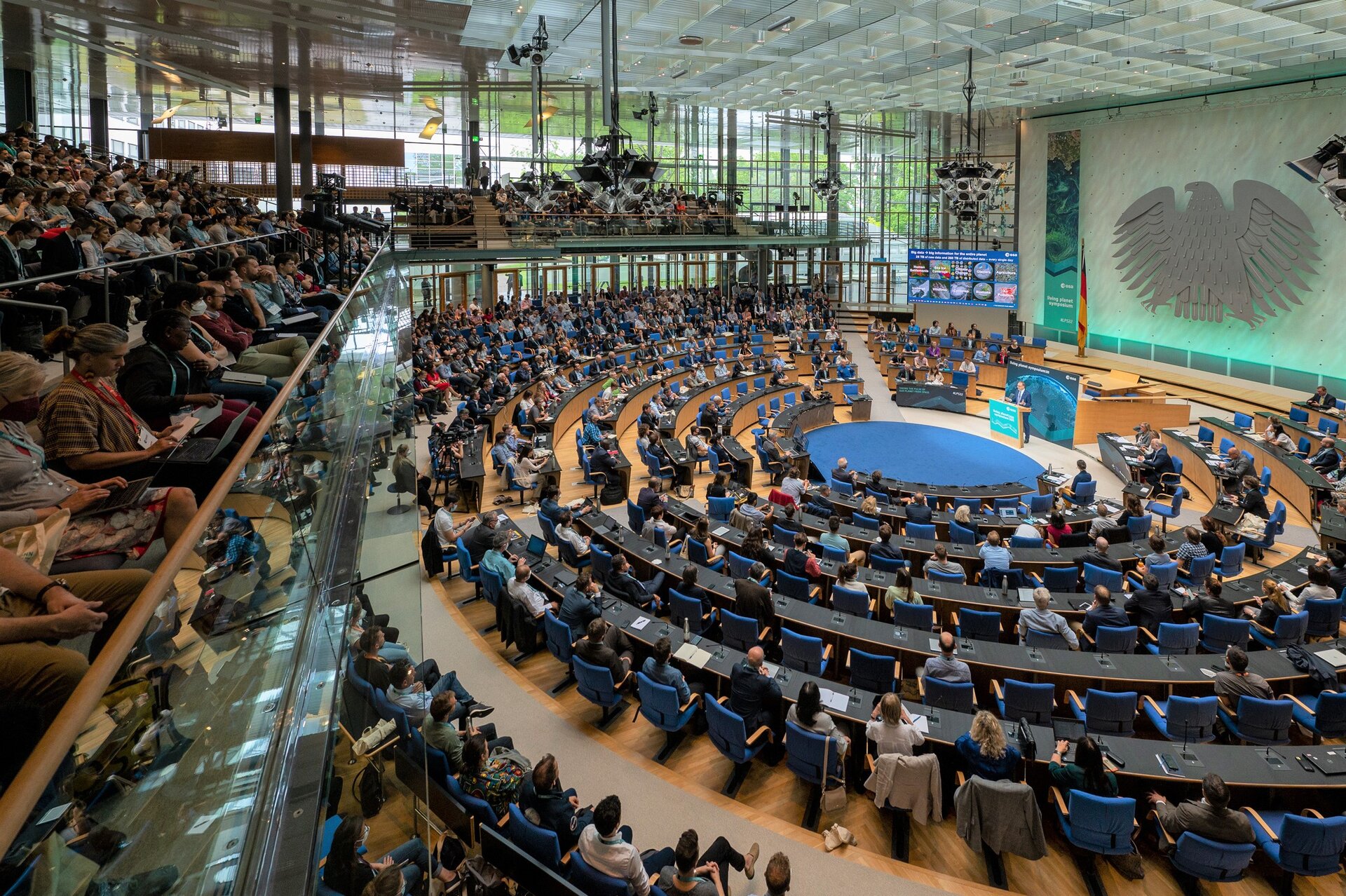Living Planet Symposium kicks off
ESA’s Living Planet Symposium has opened with a flourish with over 4000 participants including scientists, academics, space industry representatives, institutional stakeholders, data users, students and citizens gathered to discuss the latest findings on our changing planet, as well as advances in satellite technologies, new opportunities in the commercial world, and ESA’s plans for the future.
The symposium – one of the biggest Earth observation conferences in the world – takes place every three years. With the urgency to understand and monitor our planet from space to address the climate crisis and the growing interest in satellite data for all manner of uses that benefit society and the economy, each Living Planet Symposium garners more interest than the last.

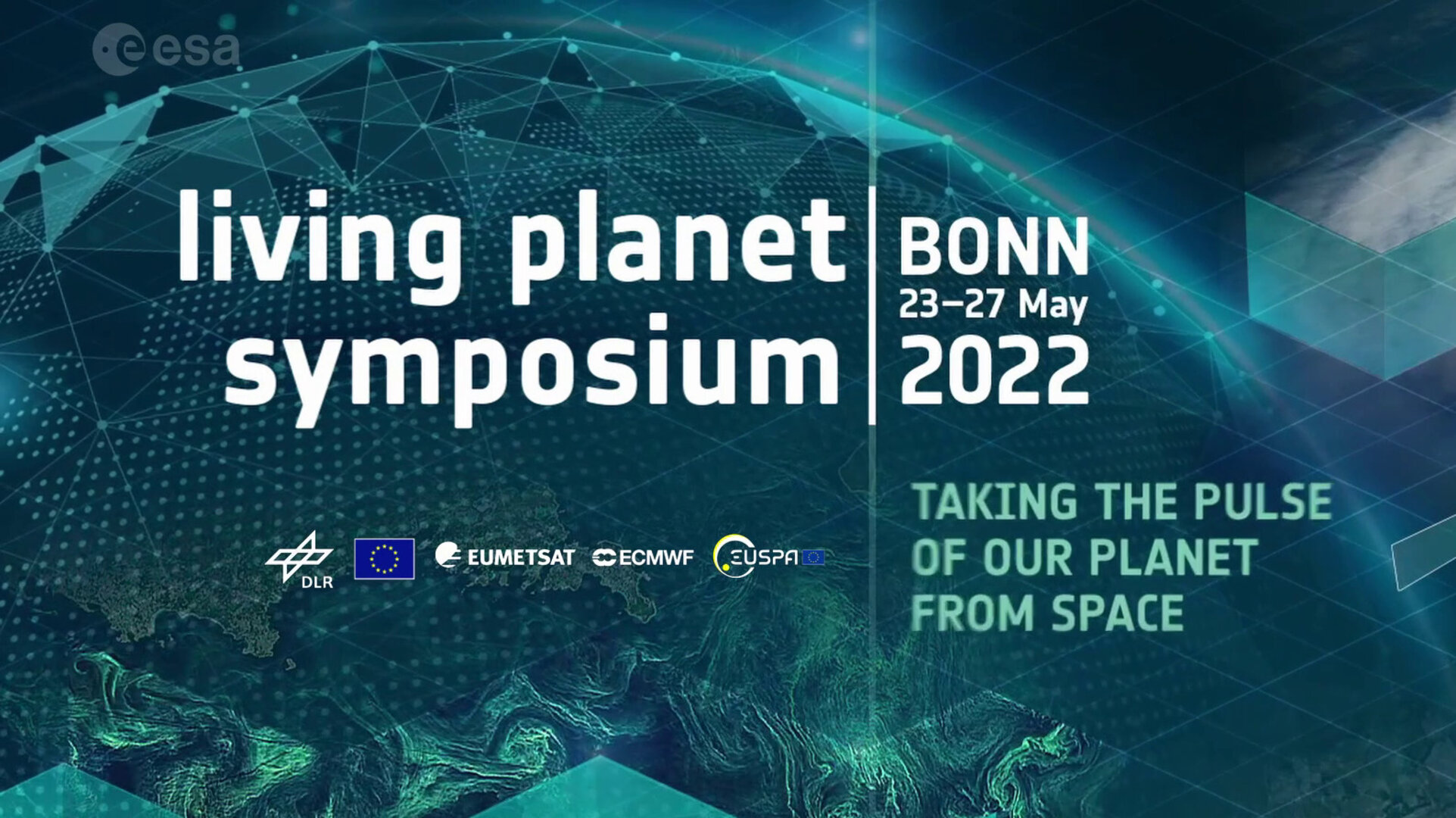
Access the video
This edition, for which ESA has partnered with the German Aerospace Center, DLR, for the week-long event in Bonn, certainly promises to be more relevant than ever.
In his opening address, ESA’s Director General, Josef Aschbacher, expressed how Earth observation is dear to his heart and highlighted that Europe is confronted by massive challenges, especially in the context of climate change and the Ukraine crisis. He stressed how we all need to shift from crisis mode to a mode of opportunity by drawing on the many facets of Earth observation to support our biggest challenges.
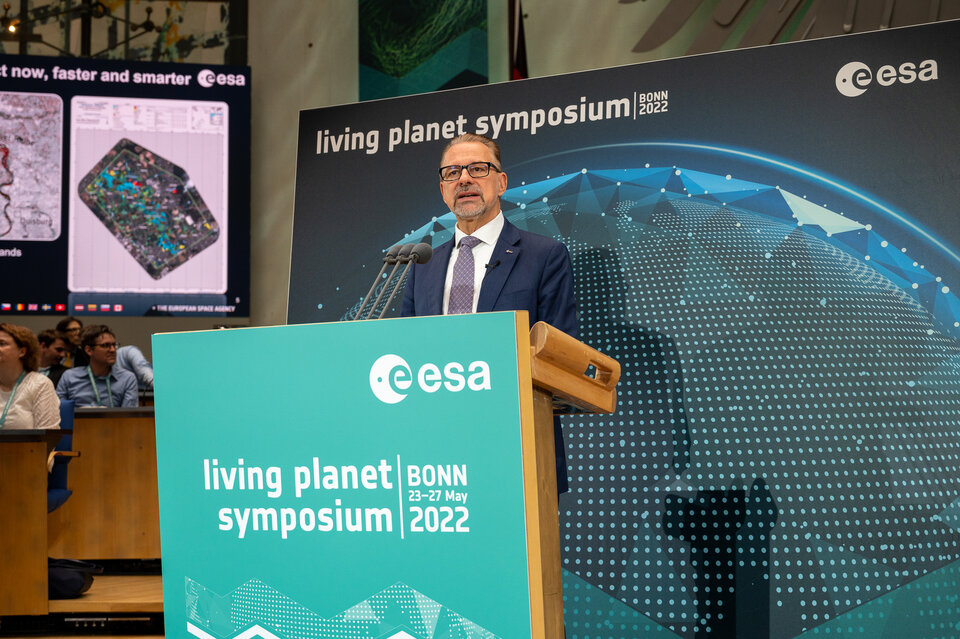
Satellites are the only real way of measuring and monitoring our world as a whole – from the dwindling ice in the far-reaches of the polar regions and high-mountain glaciers to deforestation deep in the Amazon.
But they also reveal invisible-to-the-eye changes, such as in the delicate chemistry of our atmosphere to the inner workings of our planet deep below Earth’s surface.
The science gained from satellite data is essential to understanding how our planet works and how it is changing – thereby providing crucial evidence for global and European policymaking.
While satellites give us information, very few of us have been into space to witness the beauty of our planet from afar with our own eyes.
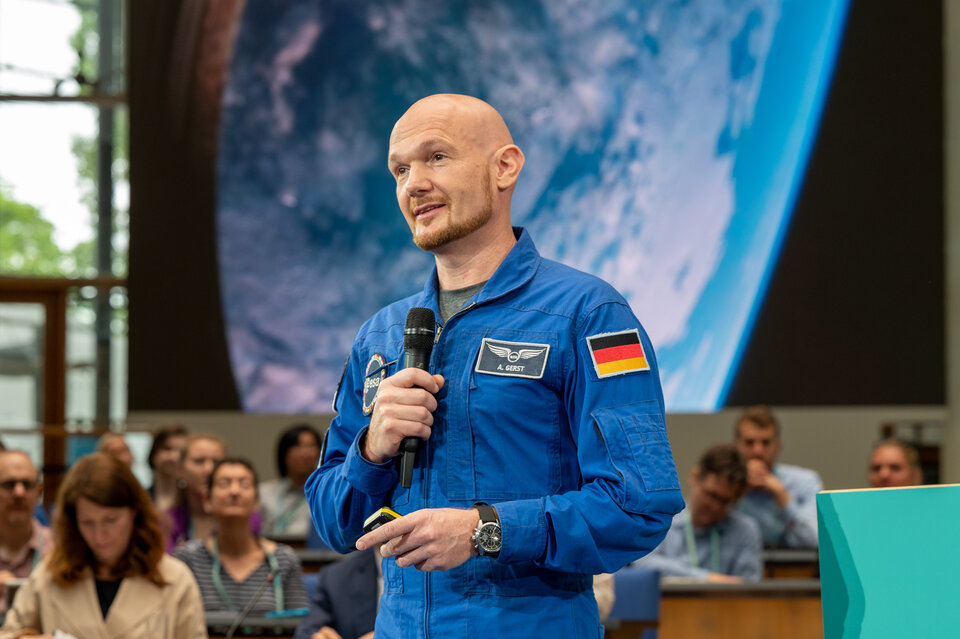
ESA Astronaut and geophysicist, Alexander Gerst followed Dr Aschbacher’s welcoming address. He talked about how wonderful it is to see Earth from space with human eyes, particularly how Earth’s atmosphere, which supports life on Earth, appears as a fragile thin blue line.
He also mentioned how 20 years ago when he was backpacking in New Zealand, he noticed how the colour of the sea changed from day to day. It was images from space that finally gave him the answer as to why this is. From the vantage of space it is clear to see how sediment from rivers is transported to the ocean, which changes the colour of the sea.
This is a mere simple example of the clarity we get from space to understand how Earth works, and scientists draw on Earth observation piece processes together to reveal the bigger picture.
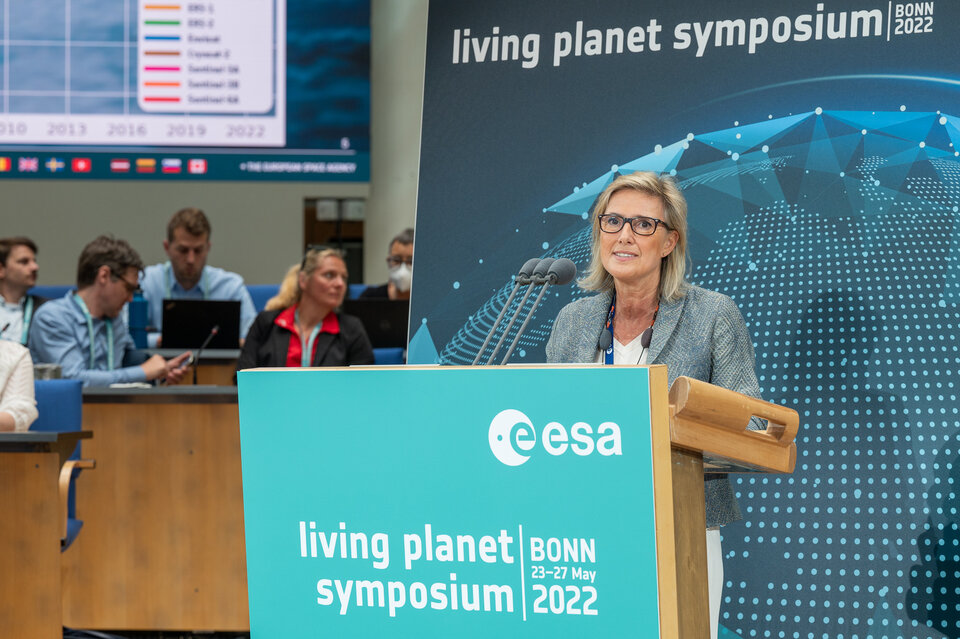
While Europe is placed firmly as a world leader in Earth observation, the sector is shifting rapidly. Earth observation is not only becoming increasingly competitive but is also offering new opportunities as a wealth of New Space concepts evolve and the digital revolution gathers pace.
ESA’s Director of Earth Observation Programmes, Simonetta Cheli, highlighted several achievements of ESA’s Earth Observation Programme and the relevance for technological innovation and scientific excellence, the economic dimension and commercial perspectives. She also emphasised the strategic relevance of Earth observation in supporting current European policy priorities such as the Green Deal, the climate Paris Agreement and pledges made at COP26.
She also said, “We are taking Earth observation into the future such as the continuity of programmes like Copernicus with the European Commission, big data, artificial intelligence, the push to develop novel space technologies such as quantum sensors, as well as growing opportunities to foster commercial markets.”
With eyes now on Bonn, the week not only promises to be a week of discovery about our changing planet, but also promises a unique forum for decision-makers to glean information, for partnerships to be forged and formalised, for space industries to join the conversation, for students to learn, and for all to explore the concepts of New Space such as the digital transformation and commercialisation.
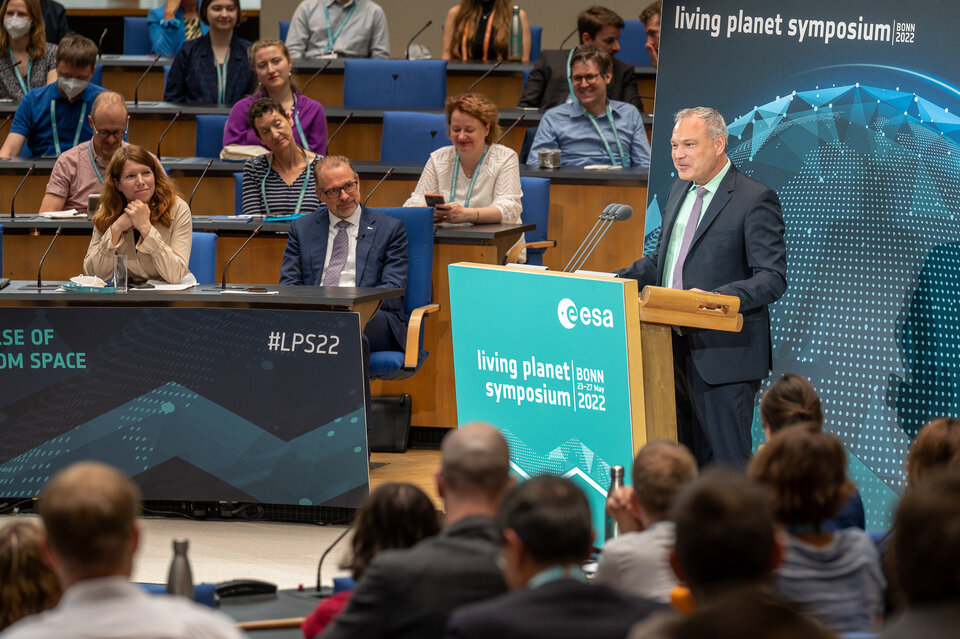
As noted by Walther Pelzer, Head of DLR, “The symposium is an excellent opportunity for an international exchange of experts on current global challenges that affect us all, such as climate protection, food security or the implementation of sustainable technologies, which we can tackle in a more focused way with the help of Earth observation.”
For more information, please visit the Living Planet Symposium website.
For those who cannot attend the daily Plenaries, the sessions can be watched live on ESA Web TV.

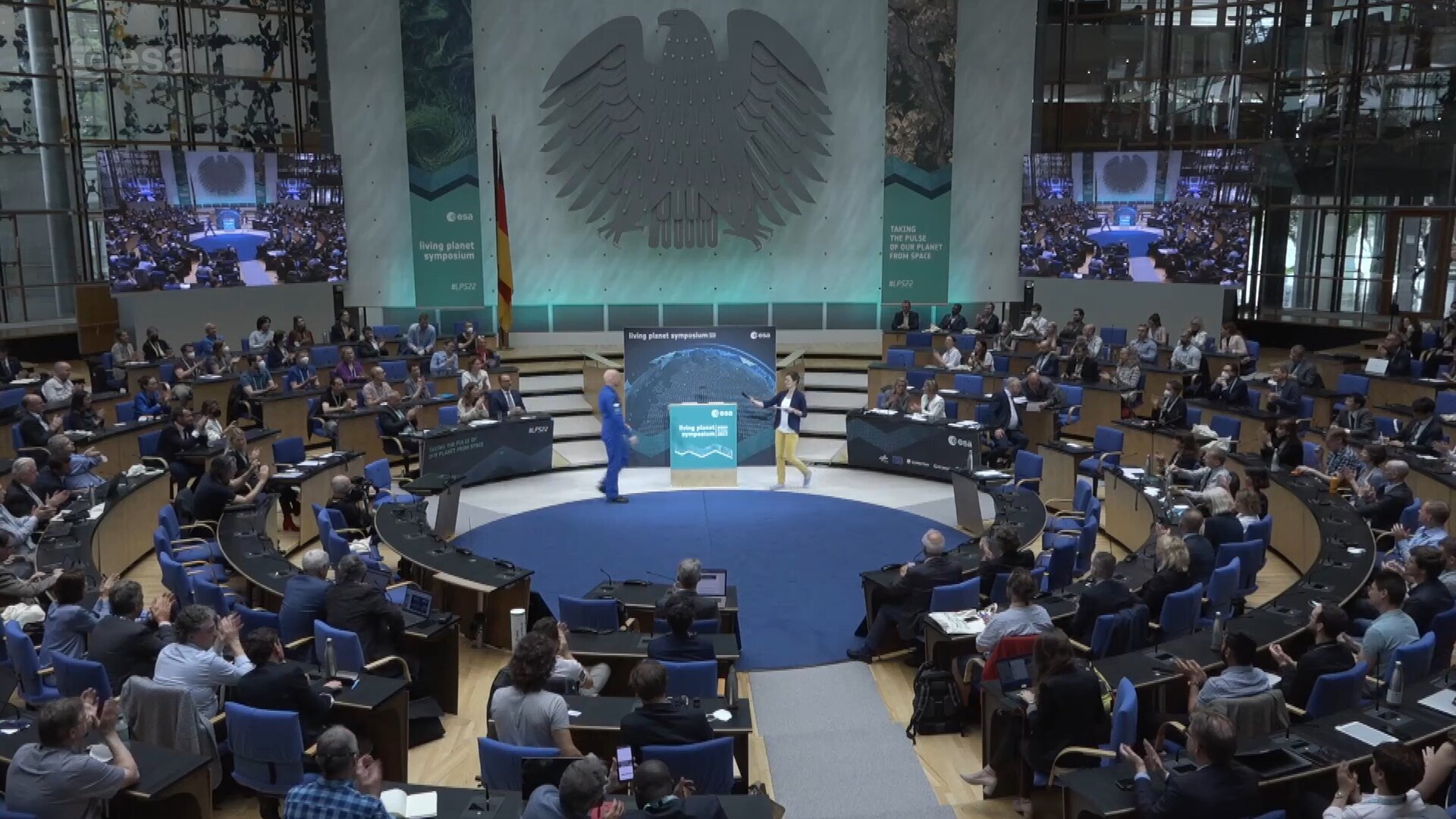
Access the video


